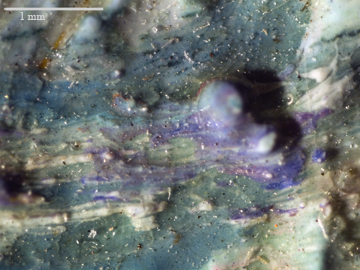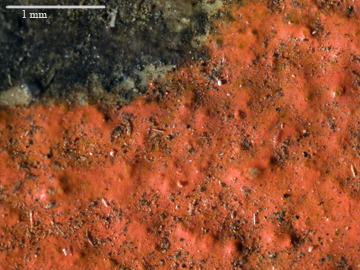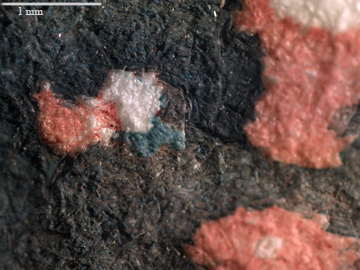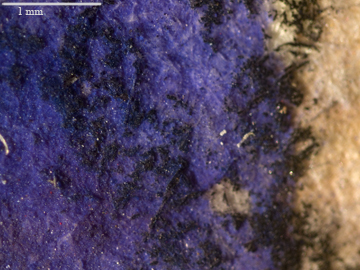
Polarized Images Paint Under-Cross Polarization
Polarization involves both electric and magnetic waves. It can be caused through reflection, scattering, crystals, and absorption. Brewster's angle is when the reflected ray and refracted ray form a right angle. Under these circumstances, molecules can't support vibration on all directions, so the light becomes polarized.
Malus' law states that if you rotate two polarizers with respect to each other, the angle determines the light transmitted. When aligned, all light will pass through. But when turned 45 degrees, the light is extinguished causing the filters to look black. These filters are linear polarizers.
 |
| Oil paint on canvas captured in polarized light |
 |  |  |
| Watercolor paint on canvas in polarized light | Watercolor paint on paper | Watercolor paint on board |
The same basic setup was used to capture these images, except two polarizing filters were added. One was placed over the light source, the other in front of the camera lens. The filters were rotated until they became cross-polarized (no light was transmitted). Since less light was passed through the system, a greater exposure time was needed. (Exposure was increased by approximately three stops). There is not much difference in the watecolor paint; however, the image of oil paint has less specular highlights. The surface and texture can be more easily seen and evaluated this way.